Exploring the Elegance of Electric Percolator Coffee Pots
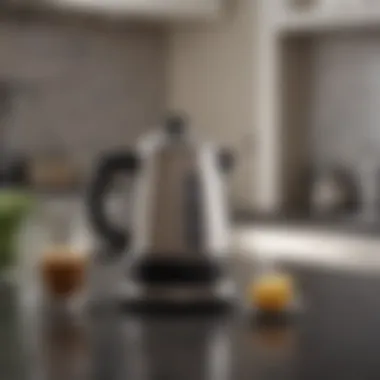
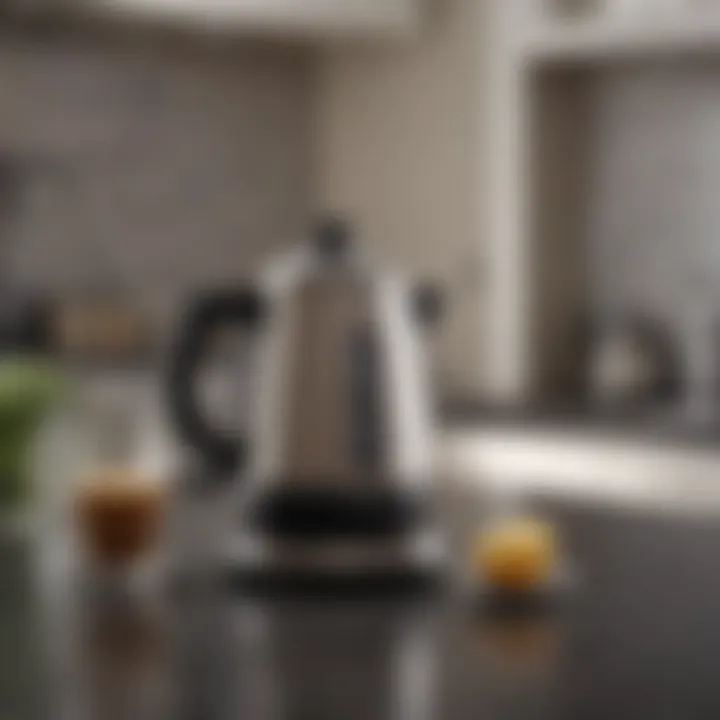
Intro
The electric percolator coffee pot stands out in the landscape of coffee brewing methods. It connects tradition with modern technology, bringing forth an array of flavors while ensuring ease of use. Coffee enthusiasts cherish it not just for its functionality but also its cultural resonance. This device has shaped how coffee is prepared and consumed in various settings, from homes to cafes.
This article will provide a detailed exploration of the electric percolator, focusing on its mechanics, advantages, and significance in contemporary coffee culture. It will offer insights that both novice coffee makers and seasoned brewers will find valuable. By examining models, reviewing maintenance strategies, and considering user experiences, this guide aims to illuminate the electric percolator's place in today’s kitchen.
"Understanding the way a coffee pot influences the brewing process can enhance the appreciation for each cup."
Delving deeper into the electric percolator, we will uncover the unique aspects that make this coffee-making device essential. Its legacy transcends mere functionality, intertwining with personal stories and experiences tied to the art of brewing.
Prelims to Electric Percolators
Electric percolators represent a significant advancement in the coffee brewing landscape. They are not just appliances but a bridge between tradition and modern efficiency. Understanding electric percolators is essential for anyone who values coffee as more than a mere beverage. These devices promise the true essence of coffee but require a grasp of their functionality and benefits.
Definition and Basic Concept
An electric percolator is a type of coffee maker that brews coffee by continually cycling boiling water through the coffee grounds using gravity. This method enhances extraction, resulting in a full-bodied flavor profile. Unlike drip coffee makers, which operate on a more linear principle, electric percolators engage in a cyclical process. They allow water to rise and fall, which promotes a thorough infusion of the coffee grounds. The design typically consists of a water chamber, a filter basket, and a tube for dispensing brewed coffee.
Historical Development
The electric percolator has its roots in the late 19th century. The concept emerged from the need for a faster and more efficient brewing method. Early designs were entirely manual, with heat sources like stovetops. Electric percolators began appearing in the 1920s, coinciding with widespread adoption of household electricity.
Over the decades, these machines have evolved. Modern innovations have improved their design, functionality, and usability. While espresso machines and single-serve options gain popularity, electric percolators maintain a loyal following. They evoke nostalgia while offering consistency and ease of use. The history of electric percolators reflects changes in technology and consumer preferences, marking them as a beloved staple in many homes.
"The electric percolator is a testament to innovation, intertwining our love for coffee with the advancements of domestic technology."
Through the exploration of electric percolators, enthusiasts can appreciate both their historical significance and practical advantages. Understanding their operation lays the foundation for a more enjoyable coffee experience, paving the way to discovering their many benefits.
How Electric Percolators Work
Understanding how electric percolators work is essential for anyone who wants to appreciate the brewing process and the science behind it. This knowledge not only enhances your brewing skills but also informs you about the various functionalities and features that electric percolators offer. With an electric percolator, coffee enthusiasts can enjoy a unique brewing method that yields a distinct flavor profile, making it a popular choice among coffee lovers.
Key Components
Electric percolators consist of several key components that work together to produce coffee. The most critical parts include:
- Water Chamber: This is where water is stored before being heated.
- Heating Element: Responsible for heating the water to the appropriate temperature for brewing.
- Percolation Tube: A hollow tube that allows water to travel from the water chamber to the coffee grounds.
- Coffee Basket: Holds the coffee grounds and is positioned above the water chamber.
- Lid: Seals the system, allowing pressure buildup, which helps in the brewing process.
Each of these components plays a significant role in ensuring that the brewing process runs smoothly. Understanding how they function can help you troubleshoot issues and optimize your coffee-making process.
Brewing Process Explained
The brewing process in an electric percolator is both fascinating and straightforward. Initially, water gets heated by the heating element, reaching a boiling point. As the water boils, it generates steam, causing the water to rise through the percolation tube. Once the water reaches the coffee basket, it saturates the coffee grounds. The brewed coffee then drips back down into the water chamber below, creating a cycle.
This process continues until the coffee reaches the desired strength. The resulting flavor tends to be rich and bold. One of the unique aspects of electric percolators is that they maintain a constant brewing temperature, ensuring consistent extraction of flavors. This method, while somewhat less common today compared to drip brewing or espresso, has a dedicated following due to the unique flavor it produces.
Comparison with Other Brewing Methods
When comparing electric percolators to other coffee brewing methods, it's crucial to consider flavor, ease of use, and brewing time. Unlike drip coffee makers, which work by filtering water through grounds, percolators repeatedly cycle hot water through the coffee, enhancing flavor complexity.
- Taste: Electric percolators tend to produce fuller-bodied coffee. The recirculation process extracts oils and flavors more effectively.
- Ease of Use: Percolators can be more involved than automatic drip systems. Monitoring brewing time and strength requires attention.
- Brewing Time: The brewing period for electric percolators can be longer, usually taking about 8 to 12 minutes, whereas drip machines may take around 5 to 7 minutes.
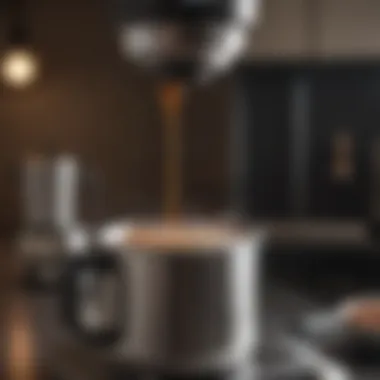
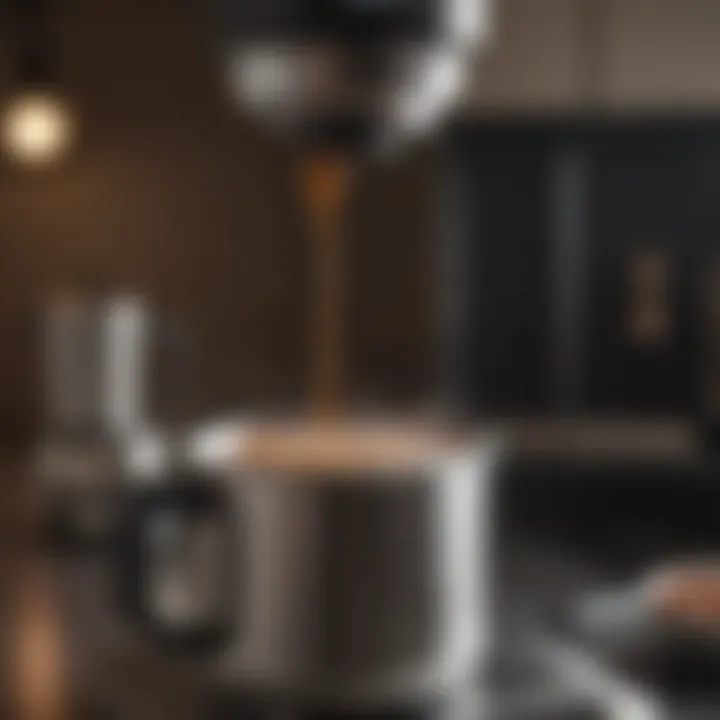
Advantages of Electric Percolators
Electric percolators stand out in the crowded world of coffee brewing. They offer several advantages that make them appealing to coffee enthusiasts. First, consistency in brewing is paramount for a good cup of coffee. Then, ease of use ensures that even beginner brewers can achieve satisfying results. Finally, versatility in brewing allows for experimentation and customization of flavors. These facets combine to elevate the experience of making coffee.
Consistency in Brewing
One key advantage of electric percolators is their ability to produce consistently brewed coffee. Unlike other brewing methods, where variables such as water temperature and duration can lead to inconsistent results, electric percolators automate much of the process. They regulate temperature and timing effectively.
This automatic control means users get a reliably brewed cup each time. For those who savor their morning ritual, predictability can be comforting. Whether it's a strong espresso-like shot or a lighter brew, consumers can adjust to their preferences without sacrificing quality.
- Temperature regulation helps extract the right flavors.
- The brewing cycle runs for a pre-set time, ensuring thorough coffee extraction.
- Users can anticipate similar taste profiles with each brew, enhancing their coffee experience.
"Consistency is key for coffee lovers; an electric percolator simplifies this."
Ease of Use
Electric percolators shine in their user-friendly design. They often come with straightforward controls, making them accessible to everyone. Simply add water and coffee grounds, hit a switch, and let the machine do the work. This is very different from more manual methods that require more attention.
The design often includes features like a transparent brew basket, which allows users to monitor the brewing progress. As an added bonus, many models have an automatic shut-off function that prevents over-brewing, making it nearly effortless to achieve the desired result.
- Minimal preparation is needed before brewing.
- Many models offer quick brewing times, catering to busy schedules.
- The automatic functions reduce user error.
Versatility
Electric percolators also offer notable versatility. Different models cater to various tastes and brew strengths. Users can experiment with types of coffee grounds, adjusting their brew to create unique flavors. Some models allow for different size adjustments, accommodating varying quantities of coffee.
The capacity of these machines often ranges from a single cup to multiple servings. This makes them suitable for individual use or gatherings. Additionally, some electric percolators can be used with loose tea leaves, making them useful for tea lovers as well.
- Brew anything from strong coffee to mild blends, adjusting to taste.
- Applicable for a range of beverages beyond coffee.
- Ideal for both personal and social settings, adapting to user needs.
Types of Electric Percolators
Understanding the various types of electric percolators is crucial for coffee enthusiasts looking to optimize their brewing experience. Electric percolators come in different forms, each presenting unique benefits and considerations. These distinctions can greatly impact the taste, convenience, and overall satisfaction derived from coffee preparation.
Traditional Models
Traditional electric percolators typically feature a classic design and manual settings. These models often are constructed from stainless steel or glass. They allow for a hands-on approach to brewing, enabling users to gauge the coffee strength based on the duration of the brewing cycle. Traditional models are celebrated for their durability and often evoke nostalgia among those who have used them for years.
Some key points about traditional electric percolators include:
- Simplicity: Fewer electronic components can translate into less potential for malfunction.
- Brewing Control: Users can influence the brewing time, adjusting to their taste preferences.
- Aesthetic Appeal: For many, the visual appeal of a traditional model can enhance the kitchen decor.
However, traditional models do require more attention during the brewing process. It is important for users to monitor the brewing time to prevent over-extraction, which can lead to a bitter flavor.
Modern Innovations
Modern electric percolators have transformed the coffee brewing landscape by integrating technology for enhanced convenience. These models come equipped with programmable settings, temperature controls, and even built-in grinders. They often boast features that allow users to customize the brewing process without constant supervision.
Some notable aspects of modern electric percolators are:
- Programmability: Many models allow users to set a timer or choose pre-sets for different types of coffee.
- Advanced Materials: The use of non-stick coatings and BPA-free plastics makes these percolators easier to clean and maintain.
- Sustainability: Some brands focus on eco-friendly materials and energy-efficient designs, appealing to environmentally conscious consumers.
These innovations make modern electric percolators appealing to a broader audience, particularly those who prioritize convenience and speed. Users can enjoy a quality cup of coffee with minimal effort, making them suitable for busy mornings or gatherings.
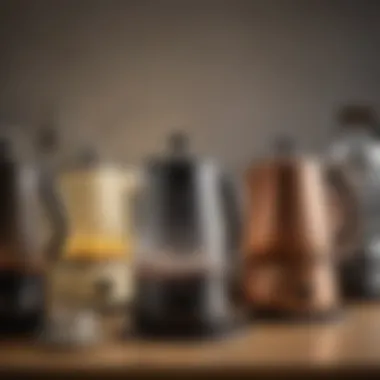
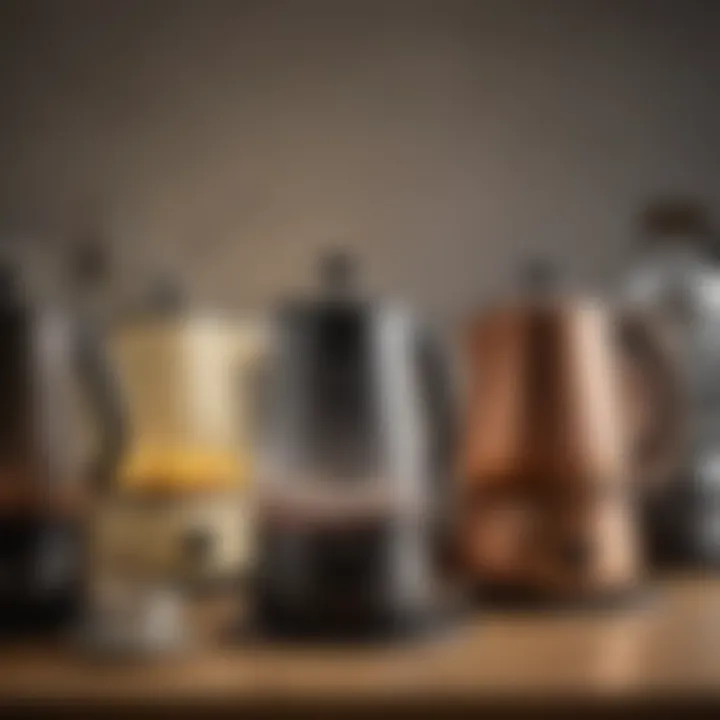
"Selecting the right type of electric percolator can greatly enhance your coffee brewing experience, leading to a richer flavor and greater satisfaction."
In summary, the choice between traditional models and modern innovations hinges on personal preferences regarding aesthetics, control, and convenience. Understanding these types helps users make an informed decision best suited to their coffee brewing needs.
Factors to Consider When Choosing an Electric Percolator
When selecting an electric percolator, it is crucial to consider several factors that influence the overall brewing experience. The specific elements, benefits, and considerations surrounding this choice can greatly affect both the quality of coffee produced and the enjoyment of the brewing process itself. This section aims to outline the essential factors to review before making a purchase.
Capacity
Capacity is a primary consideration when choosing an electric percolator. It pertains to how much coffee the pot can brew at once. Different models offer varying capacities, ranging from small units that can brew a single cup to larger ones that can accommodate multiple servings. For instance, if you are someone who often entertains guests or has a big family, a percolator with a high capacity, such as the Cuisinart PRC-12, might be more suitable. On the other hand, if you typically brew coffee just for yourself or a small group, a smaller model would suffice.
The ability to brew a larger volume can be appealing, but it can also result in wastage if the coffee is not consumed promptly. Ideally, look for a capacity that aligns with your typical coffee consumption habits.
Material Quality
Material quality significantly impacts the durability and performance of an electric percolator. Most models are constructed from stainless steel, glass, or aluminum. Stainless steel is prized for its robustness and resistance to rust, making it a preferred choice among many users.
The internal components, such as the filter and the base, also merit attention. High-quality materials ensure better heat retention and even brewing, leading to a more consistent coffee taste. Always consider how easy the materials are to clean as well, as this can enhance your overall experience of maintenance. A poorly constructed model might lead to undesired flavors in your coffee and can wear down quickly.
Price Range
Price is an unavoidable factor when selecting an electric percolator. The range can vary dramatically based on features, brand reputation, and material usage. Lower-end models can be found for budget-conscious consumers, while high-end options may feature advanced technology or unique designs. It is essential to set a budget that you are comfortable with, but also be mindful that the cheapest option may not necessarily provide the best performance or longevity.
Investing a bit more in a quality product can lead to better results and satisfaction in the long term. As such, it’s wise to compare different models within your budget range, noting any additional features that might justify a higher price. Remember that price alone should not dictate your choice; consider the balance of capacity, material quality, and performance.
"A carefully selected electric percolator can elevate your coffee experience to new heights."
Maintenance and Care for Electric Percolators
Proper maintenance is critical for the longevity and performance of electric percolators. A well-maintained coffee pot not only brews superior coffee but also extends the appliance's longevity. This section will discuss the various aspects of maintaining an electric percolator, detailing cleaning procedures and troubleshooting common issues.
Cleaning Procedures
Regular cleaning of your electric percolator is essential. Over time, oils from coffee and mineral deposits from water can build up in the system, affecting the flavor and quality of your brew.
- Daily Cleaning: After each use, it is best to empty the pot and rinse the components with warm water. This simple action helps prevent residue from settling.
- Deep Cleaning: Aim for a deep clean every few weeks. Use a mixture of equal parts water and white vinegar to fill the water chamber. Turn on the percolator and allow it to brew. Once the cycle finishes, discard the mixture and run plain water through one or two more cycles to remove any vinegar taste.
- Dealing with Stains: For stubborn stains, create a paste with baking soda and water. Apply it to any affected areas and gently scrub with a non-abrasive cloth.
"Cleaning your electric percolator regularly not only enhances your coffee's taste but also keeps your appliance in optimal condition."
Troubleshooting Common Issues
Like any appliance, electric percolators can face certain issues from time to time. Knowing how to troubleshoot these can save you time and frustration.
- Slow Brewing: If you notice that your percolator is brewing slower than normal, it may be due to mineral buildup. Running a vinegar solution through the system can often resolve this issue.
- Burnt Coffee: Overheating can lead to burnt coffee. Check the temperature settings, and ensure the percolator is not left on for too long.
- Leaking: If your percolator is leaking, inspect the seals and connections. In some cases, simply tightening or realigning the parts can fix the issue.
- Electrical Problems: If the percolator does not turn on, check the power source. Use a different outlet or inspect the power cord for damages.
User Preferences and Experiences
Understanding user preferences and experiences with electric percolators is crucial for several reasons. It serves not only to inform potential buyers but also helps manufacturers improve their products. Knowing what coffee lovers expect can shape the future of electric percolators.
Consumer preferences often vary based on individual tastes, brewing habits, and lifestyle choices. Some may prioritize the convenience an electric percolator offers, while others might focus on the taste profile of the coffee. Additionally, the feedback from seasoned users provides valuable insights into the longevity and performance of different models, helping newcomers make informed decisions.
Taste Profiles


The taste profile is perhaps the most significant element in user preferences when it comes to electric percolators. Each type of coffee brewing method produces distinct flavors and aromas. Electric percolators tend to yield a strong and rich coffee taste, which many users appreciate. The brewing process applies heat consistently, allowing for even extraction of coffee grounds.
Some users report that electric percolators enhance the boldness of coffee, delivering a full-bodied experience. The design and water temperature significantly influence how flavors are extracted. For coffee lovers keen on enjoying richer, more pronounced tastes, electric percolators can meet these specific needs.
However, it is worth noting that a few users may find the taste too robust or slightly over-extracted, which can happen if the brewing time is not monitored carefully. This delicate balance is a vital consideration when selecting and using an electric percolator.
Community Feedback
Community feedback plays an essential role in shaping preferences and experiences with electric percolators. Online platforms, such as forums on Reddit or dedicated coffee groups on Facebook, serve as spaces where enthusiasts share their thoughts, tips, and recommendations. Users discuss everything, from their favorite brands to specific brewing techniques that enhance flavor quality.
One recurring theme in community discussions is the issue of maintenance and performance over time. Many users highlight the importance of keeping the coffee pot clean to avoid bitterness and ensure the longevity of the device.
"Regular cleaning is essential to maintain taste and performance. It sounds simple, but it has a big impact on the experience," mentions a Reddit user.
Reviews often reveal preferences for particular models based on their reliability and ease of cleaning. The feedback also informs new users about common issues and effective solutions, creating a supportive environment for learning and improving coffee-making skills.
Overall, the preferences and experiences articulated by users provide rich insights into the world of electric percolators. Such information is not only valuable for potential buyers but also encourages a culture of sharing knowledge and passion for coffee.
Electric Percolators in Popular Culture
Electric percolators are not just kitchen appliances; they embody a cultural phenomenon that reflects our evolving relationship with coffee. Their presence in movies, television shows, and literature has cemented their status as symbols of comfort, routine, and sometimes nostalgia. This section will explore the various ways electric percolators have appeared in popular culture and what they suggest about societal attitudes towards coffee drinking.
Cinematic Depictions
The portrayal of electric percolators in film often acts as a subtle yet powerful symbol. For instance, in many classic American movies, the image of a bubbling percolator signifies a sense of home and domestic tranquility. It brings warmth to scenes, hinting at familiar morning rituals and community gatherings. In particular, movies from the 1950s and 1960s frequently featured kitchen scenes where the sound of the percolator provided an aural backdrop to family interactions.
These films captured the essence of post-war America when coffee drinking became a widespread social activity. Electric percolators represented modern convenience, contrasting with the more labor-intensive methods that preceded them. Some films use electric percolators to conceptualize themes of connection and unity, where characters gather over a pot of freshly brewed coffee, sharing their stories and lives.
"The electric percolator does more than brew coffee; it brews memories and fosters connections among us."
Literary References
In literature, the electric percolator often surfaces as a motif representing comfort and ritual in daily life. Writers use them as metaphors or identifiers for characters. In narratives, a protagonist brewing coffee with an electric percolator might suggest domesticity or a pause in their hectic modern life. It evokes a sense of relaxation, making coffee drinking a moment of solace amid chaos.
Moreover, contemporary authors sometimes highlight the electric percolator as a nod to nostalgia, reflexively looking back at simpler times. Their mentions can offer insight into character backgrounds or even critique contemporary fast-paced lifestyles. Some novels feature scenes where electric percolators are central, opening dialogues between characters or setting the stage for key plot developments.
The cultural impact of electric percolators in both film and literature demonstrates that they transcend their functional purpose. They allow us to explore beyond the physical act of brewing coffee into the emotional and social implications of that act. Through these cultural lenses, electric percolators emerge as rich symbols in our collective consciousness.
Epilogue
The conclusion serves as a pivotal moment in this exploration of electric percolator coffee pots. It synthesizes the various elements discussed throughout the article, reaffirming the device's unique position in contemporary coffee culture. In an age where coffee brewing methods are plentiful, understanding the intricacies of electric percolators allows enthusiasts and novices alike to appreciate their functionality.
Summary of Insights
Through this analysis, we have observed several key takeaways:
- Historical Context: The electric percolator's evolution reflects broader changes in coffee preparation over the years.
- Working Mechanism: A thorough understanding of its brewing mechanism illustrates why it tends to produce a distinct taste profile, appealing to specific palates.
- User Preferences: Insights into how users describe the flavor and experience highlight the subjective nature of coffee enjoyment.
- Cultural Significance: The electric percolator has earned a noteworth place in both cinematic and literary depictions, symbolizing both nostalgia and practicality.
This information underlines the electric percolator’s value not only as a kitchen appliance but also as a cultural artifact. It merges convenience with tradition, providing something for every type of coffee drinker.
Final Thoughts
In closing, the electric percolator offers numerous benefits that contribute to the art of brewing. Its ease of use, consistent results, and ability to adapt to personal preferences make it a compelling choice for any coffee lover. However, considerations such as material quality and the specific brewing process are essential when selecting the right model for one’s needs.
This exploration into electric percolator coffee pots reveals that this device is more than just a tool; it's a gateway into a rich world of flavor and tradition. Whether you are a connoisseur or a casual drinker, recognizing the importance of these coffee makers enriches your brewing experience and connects you to the significant culture surrounding coffee.
"The art of coffee brewing transcends mere preparation; it becomes an engaging ritual that enhances one's appreciation for the beverage itself."
As you finalize your choice in coffee brewing methods, consider the electric percolator as not only a historical entity but also a dynamic participant in your daily coffee routine.







